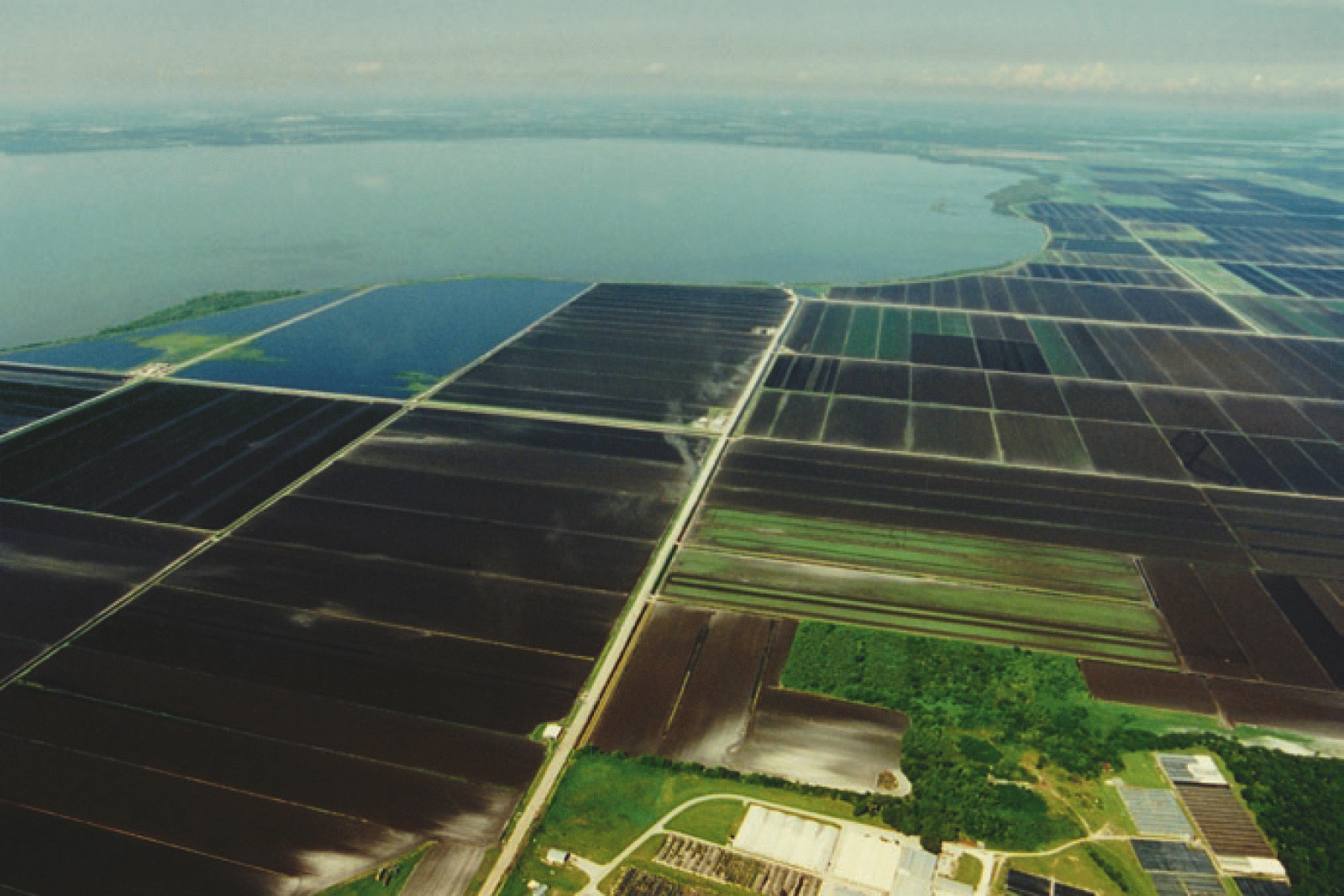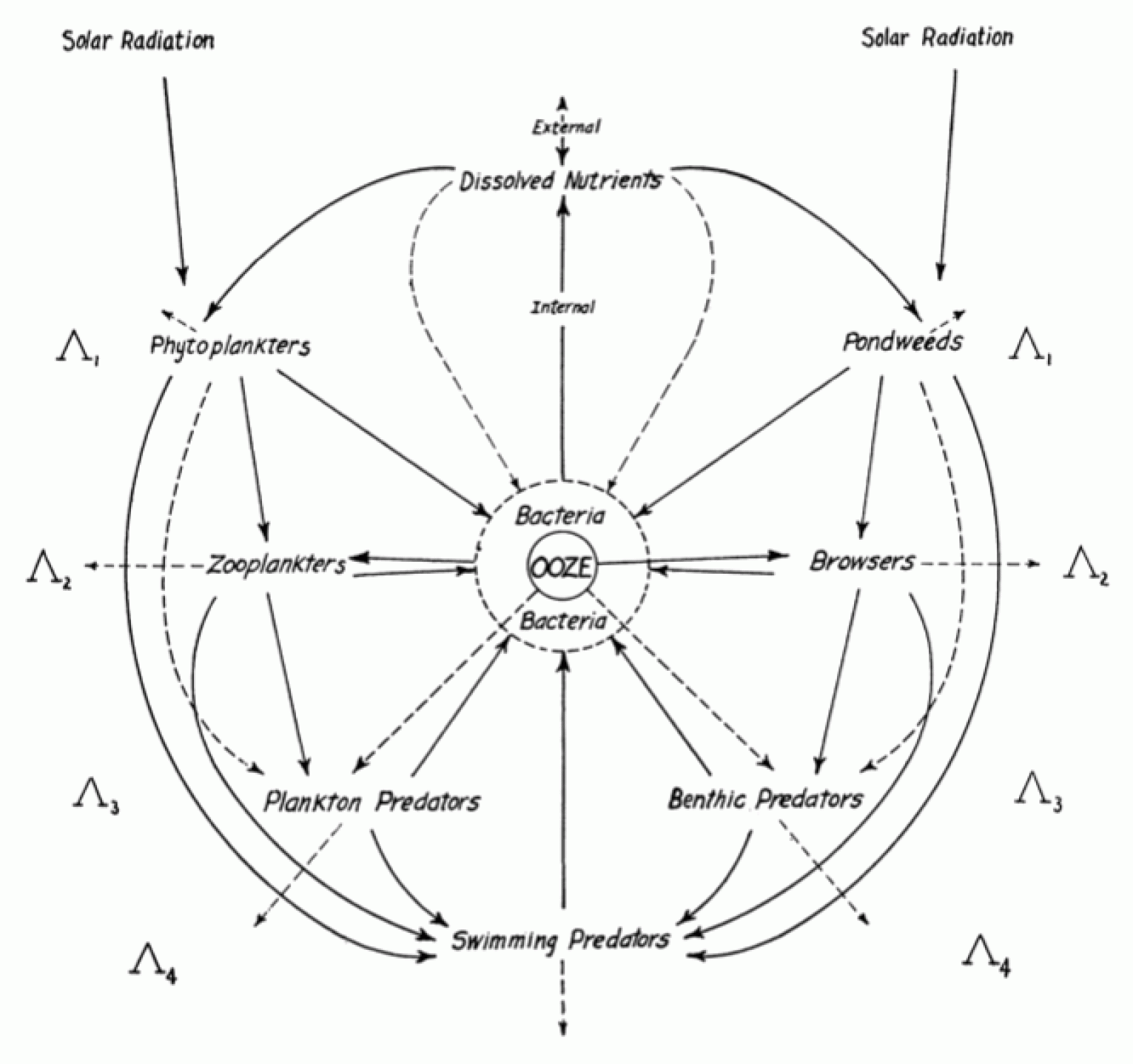Research
The Trophic-Dynamic Aspect of the Plantationocene
Zachary Caple

Vegetable fields on the shores of Lake Apopka. Credit: St. Johns River Water Management District
In his landmark 1942 paper “The Trophic-Dynamic Aspect of Ecology,” Raymond Lindeman introduced the concept of the food web in a holistic analysis of the biogeochemical cycling of lakes. Like other ecologists of the period, Lindeman treated lakes as microcosms of more distributed, difficult-to-study terrestrial ecosystems. This project builds on Lindeman’s work to investigate the aquatic ecologies and chemically fertilized-food webs of the global plantation. It does so through a case study of Lake Apopka, a large shallow lake in Central Florida subject to neocolonial agricultural engineering and nutrient-laden wastewater discharges. In the early 1940s, the lake’s floodplain was converted to large fields for winter vegetable production. Monoculture plantings of corn, celery, and carrots were worked by Black field hands and doused with fertilizers. In the summer months, the fields were flooded to prevent soil oxidation. When it came time to plant, these floodwaters—along with the fertilizer nutrients from the fields—were discharged into the lake. At first, these pulses of fertility made the lake more productive: beds of eelgrass grew more luxurious and largemouth bass multiplied. But the rate of nutrient dumping eventually outpaced the absorptive capacity of the ecosystem and, in 1949, the lake collapsed. In a matter of weeks, the eelgrass-bass community had been displaced by toxic algae blooms and schools of bottom-feeding gizzard shad.
Caple’s research investigates Lake Apopka’s ecological history on its own terms but also uses it as a lens to view the eutrophication crisis of our overly fertilized planet. By connecting the pollution ecologies of the lake to the biogeochemical infrastructures of modern agriculture, Caple expands Lindeman’s analytical approach to food webs while leveraging the power of lakes to tell stories of the macrocosm.
This project is part of the Research and Fellowship Program 4A Laboratory: Art Histories, Archaeologies, Anthropologies, Aesthetics, a cooperation between the Kunsthistorisches Institut in Florenz and the Stiftung Preußischer Kulturbesitz.

Generalized lacustrine food web. Lindeman, Raymond. 1942. “The Trophic-Dynamic Aspects of Ecology.” Ecology 24, p. 401.


